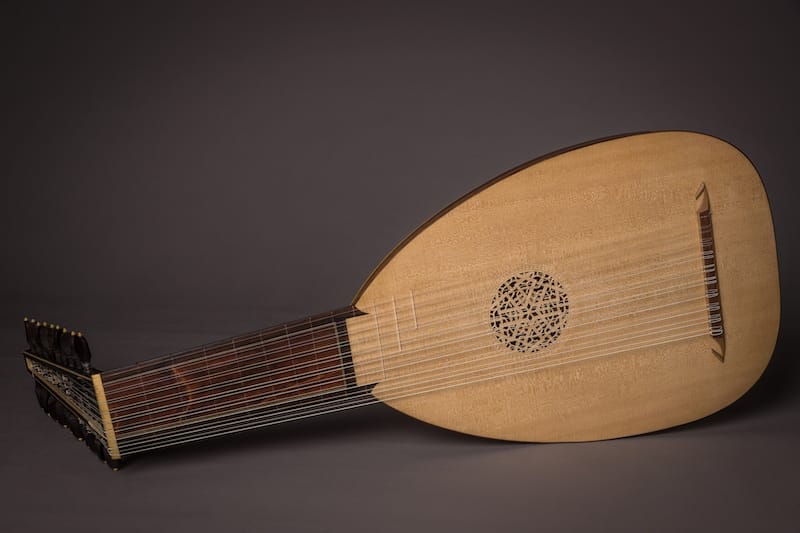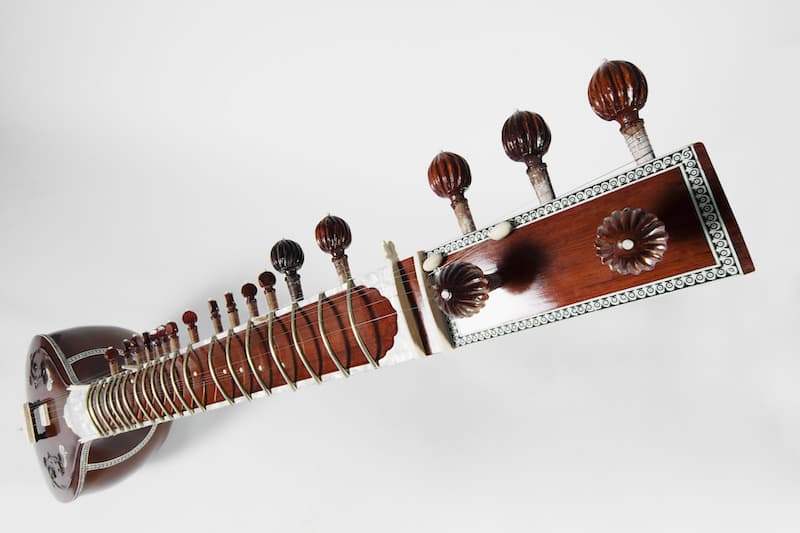The lute is a stringed instrument that you may have heard of but aren’t sure exactly what it is. Indeed, it’s an old instrument that’s rarely played today, although you may find it on show at your local Renaissance Fair.
In this piece, we’re going to teach you some fun and interesting facts about the lute. Keep reading even if you don’t already play a stringed instrument. There might be a few things this old instrument still has to teach.
1. The Lute Is a Forerunner of the Classical Guitar

You might look at a lute and think it looks like a weird guitar, and you wouldn’t be wrong.
The lute was developed a couple of centuries before the classical guitar but still features an extremely similar construction.
Guitar luthiers took inspiration from the lute when the first guitars were being made.
However, the body of the lute is smaller than the guitar, and the neck is typically wider relative to the rest of the instrument.
Also, lutes often have more than six strings, which is standard for the guitar.
2. Old English and French Lutenists Were Pretty Different
In the early 16th century, lutenists from England and France were competitors in everything.
To be fair, each region’s approach to lute music was different enough to warrant historical inspection.
Some of the first English lute songs were homophonic, meaning their parts moved to the same rhythm as the overall melody.
French songs, on the other hand, were polyphonic, written for up to four voices.
3. Lutes Can Have Different Numbers of Strings
Lute strings are often strung in pairs known as “courses.” A typical medieval lute would have four courses, meaning eight strings in total.
However, as time went on, newer versions of the lute widened the neck, making room for more strings.
Today, lutes can have up to 13-courses, though the average Renaissance lute has eight.
4. Lutes Are Typically Made From Spruce
The beauty of lute-making is that you can adapt different woods to match the sound you’re looking for.
However, the wood needs to be resonant, meaning it can’t be too thick to block noise but will still vibrate when it comes into contact with the sound from the strings.
As a result, spruce is typically the wood of choice for European luthiers, despite some specialists preferring otherwise.
5. Lutes Were Developed from the Oud

The original lutes came from the oud, a strikingly similar instrument with claims of being thousands of years old.
However, the oud could have been modified from other stringed instruments along the way, so the real story is unclear.
While you might confuse the two, there are a couple of key differences between the lute and the oud.
The lute has frets while the oud does not.
Also, the lute is typically slightly larger than the oud, and the oud has a wider belly relative to its total size.
6. The First Lutes Came with the Moors
Lutes originally came to Spain with Moorish settlers and Spanish knights returning from Crusades in the Middle East.
You can find the lute in numerous Renaissance depictions of Medieval battlefields.
Not only did the instrument raise the spirits of the soldiers during battle, but the lute comforted people resting around campfires during their pilgrimages as well.
7. Indian Sitars Can Be Classified As Lutes

Though the iconic Indian sitar has a distinct sound from what you may recognize as a lute, many musicians classify the two instruments in the same category.
Both have strings parallel to the belly that wind up a pole.
However, it’s totally fine to consider the sitar as a distinct type of instrument, especially when you’re talking about their respective genres and origins.
8. The Highest String on the Lute Usually Sits Alone
While most lute strings are strung into pairs, the highest string is typically alone.
This is to help reach those quieter high notes that are otherwise impossible when you pluck two strings.
However, some luthiers, especially ones specializing in concert lutes, may pair the highest string to increase its volume as necessary.
9. The Lute’s Popularity Exploded During The Renaissance

Like many other art forms during the time, the lute’s popularity exploded when the Renaissance kicked off.
While Italian lutenists drove the first wave of new compositions at the start of the era, French and Spanish players also had their due time as well.
As a result, the lute became one of the most recognizable instruments to the masses, regardless of social status.
Some of the most famous musicians were lutenists, and it was one of the more practical instruments to have on the road.
10. As the Renaissance Went On, the Lutes Got Bigger
As luthiers were busy making the most lutes the world would ever see, some began to experiment with larger sizes.
The result was a variety of specialty instruments still belonging to the lute family, like the theorbo, a bass lute.
Larger lutes from this period are classified as Baroque lutes, a noted step forward from the Renaissance lutes of the previous century.
11. Rulers Often Affected the Volume of Lute Compositions

As the lute became more and more popular throughout Europe, kings and queens regularly requested new works to bolster the appeal to the masses.
As a result, the volume of lute compositions varies depending on who was in power and where.
For example, King Louis XIII of France was reportedly a fan of simple compositions, and many musicians penned dozens of songs for him to enjoy (or dislike) during his reign.
He also was a keen lutist himself!
12. Lutes Were Originally Played with Picks
The first lutes were played using a wooden pick, known then as a plectrum. This was necessary to reach the player’s desired volume.
However, as luthiers got better at making lutes, bodies became larger, and strings became louder, allowing players to fingerpick in most cases.
While you might see people play the lute with their fingers more often today, others prefer to use a pick. It’s all up to your preference!
13. Lute Strings Used to Be Made From Animal Guts
Although it’s a sad fact, most Medieval and Renaissance-era luthiers made strings with animal guts of some kind.
It was the best material to achieve the sound these craftsmen were looking for.
Though nowadays strings are often made from steel or nylon, you can still find gut strings on some old-style instruments.
14. Vincenzo Capirola Gave Us What We Know About the Lute
Born in Renaissance Italy, lutenist and composer Vincenzo Capirola gave us most of what we know about lute music from that period.
His work, The Capirola Lutebook, contains the most comprehensive record of lutenist compositions we have to date.
He also provided practical tips and tricks that players still use, including how to string, tune, and maintain the instrument to ensure it has a long life.
15. The Hole Inside the Lute Is Called a Rose
The name of the small hole in the belly of the lute is formally known as the rose, a fitting title for a beautiful instrument.
Lute roses aren’t typically a singular hole but an intricate carving that helps produce the instrument’s unique sound.
The rose is another way the lute sets itself apart from the guitar.
While you can achieve similar sounds with both instruments, it’s harder to mimic the sound of a lute with a guitar because it lacks the wood carving of the center rose.
Wrapping Up our List of Lute Facts
There you have it! Our 15 fun and interesting facts about the lute.
Did you learn a bit more about this cool instrument?
Maybe we missed something, or you know something cool about the lute let us know if we did.
